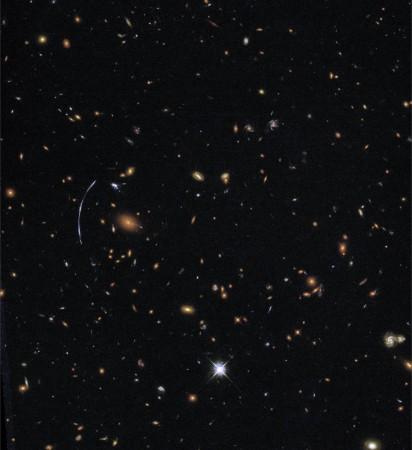Although National Aeronautics and Space Administration's (NASA) Hubble Space Telescope has provided significant information of the distant universe, it also has a limit till which it can spot planets and galaxies.
However, researchers recently cleverly pushed the telescope's limit to discover a cluster of new stars!
Astronomers reportedly have obtained images 10 times sharper than what Hubble could achieve on its own, by applying a new computational analysis to a galaxy magnified by a gravitational lens.
The images obtained by the telescope show an edge-on disk galaxy, which is studded with brilliant patches of newly-formed stars.
"When we saw the reconstructed image we said, 'Wow, it looks like fireworks are going off everywhere,'" astronomer Jane Rigby of NASA's Goddard Space Flight Center in Greenbelt, Maryland said.
The cluster of stars in the galaxy are so far away that we see it as it appeared 11 billion years ago, only 2.7 billion years after the big bang.
The cluster of stars is one of more than 70 strongly lensed galaxies studied by the Hubble Space Telescope.

The gravity of a giant cluster of galaxies between the target galaxy and Earth distorts the more distant galaxy's light. It stretches the light into an arc and magnifies it almost 30 times more.
The astronomers had to develop a special computer code to remove all the distortions caused by the gravitational lens. After the code was implemented, the researchers were able to see the disk galaxy as it would normally appear without the magnifying light.

The image of the galaxy, which was reconstructed, showed two dozen clumps of newborn stars, each spanning about 200 to 300 light-years.
"There are star-forming knots as far down in size as we can see," said doctoral student Traci Johnson of the University of Michigan, lead author of two of the three papers describing the research.

















